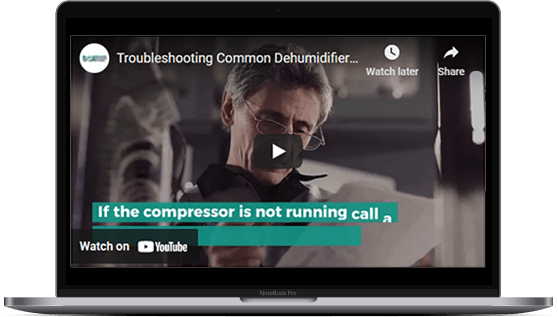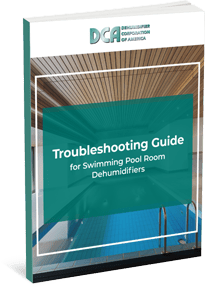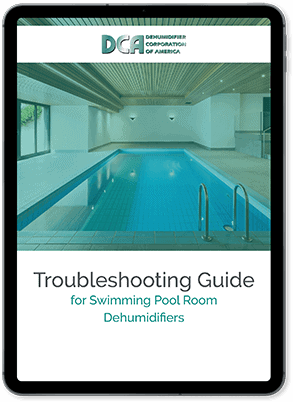With the continued legalization of marijuana across the United States and Canada, cannabis growers are finding that their profit margins have begun to shrink. Rising competition from new cannabis growers has forced established suppliers to drive their prices down, leaving many wondering where they can make up for lost revenue.
Recent Posts
Ductwork Best Practices 101
A successful dehumidification system is comprised of two critical components: a dehumidifier appropriate for the particular application, which is dependent on a long list of parameters, and proper ductwork system installation. Without proper air flow through the dehumidifier and room being dehumidified, required space conditions cannot be achieved.
What is an Outdoor Air-Cooled Remote Condenser
Outdoor air-cooled remote condensers are used as the cooling component (A/C) of an indoor pool room dehumidifier. Pool dehumidifiers deliver warm dry air to the pool room when operating. With the addition of an outdoor remote condenser the dehumidifier now can supply warm or cool dry air back to the pool room to help control the temperature and is controlled by a wall mounted automatic change over thermostat. In most cases this system will provide the proper room temperature needed to minimize pool water evaporation and provide a comfortable environment for swimmers. In very warm climates they often supplement the pool room primary A/C system.
Industrial Dehumidification: The Printing Industry
The printing industry employs multiple complex processes to ensure the production of high-quality paper products; several of these processes center on maintaining a conducive printing environment, as this sector faces several unique technical challenges, including the optimization of resource and energy utilization.
How to Troubleshoot 3 of the Most Common Dehumidifier Issues
Something is wrong: Your dehumidifier isn’t functioning properly, and you need to make the repair as quickly as possible.
But as mechanical devices, dehumidifiers contain complex inner workings with various components and parts. So what do you do, and how do you determine what’s causing the issue in the first place?
Here’s a quick guide for troubleshooting three of the most common dehumidifier issues.
Need Assistance With Your Commercial Dehumidifier?
Vertical Vs. Horizontal Dehumidifiers
DCA offers Dehumidifiers in two basic air flow configurations, horizontal and vertical. Each has its advantages and normally the size of the equipment room and/or the orientation of the ductwork dictates which is preferred especially if this is a replacement dehumidifier.
Normally a horizontal dehumidifier replaces an existing horizontal dehumidifier and the same is true for a vertical dehumidifier.
In general a vertical dehumidifier normally sits on the floor and has a slightly smaller footprint, than a horizontal dehumidifier, but is much taller. A horizontal dehumidifier can set on the floor or be suspended in a mechanical room. Horizontal dehumidifiers also have the advantage of having the discharge air flow configured to be straight thru, bottom or top.
How to Size Your Grow Room Dehumidifier
Proper humidity levels are essential for maintaining optimal air quality in a grow room, but efficiently monitoring and managing these levels can be challenging.
Why You Shouldn’t Adjust a Pool Room Thermostat
Monitoring and managing indoor humidity levels can be challenging in any type of space, but indoor pool rooms present unique difficulties. Without careful attention and management, imbalanced room air temperature and pool water temperature relationships in these rooms can cause corrosion, condensation, mold, mildew and poor air quality affecting swimmers comfort and building integrity.
In commercial indoor pool rooms, trained employees are typically on hand to manage dehumidification processes, temperature monitoring, and pool water chemistry. However, residential pool rooms usually can’t rely on employees for upkeep, nor can most semi-commercial spaces in hotels and condos; service technicians are available, but their vists are usually infrequent.
Partnering with knowledgeable HVAC professionals — ones that can provide useful feedback, recommend reliable technology, and suggest customized management plans for monitoring and controlling humidity levels — can allow for significant time and cost savings.
Pool Room Dehumidification Basics
To properly manage an ideal indoor pool space, structured dehumidification standards are essential to follow. One of the most important standards is to maintain pool room air temperature 2 to 4 degrees warmer than that of the pool water temperature. This relationship allows minimal pool water evaporation into the air of the pool room. Having the pool room air temperature cooler than the water temperature encourages pool water evaporation into the air causing dehumidification systems to run longer than needed.
It may seem practical to alter a system’s dehumidifier set points during daily pool use, but this can be highly disruptive and not recommended. Normally pool water temperature set points are constant and by extension the room air temperature will be constant as well. Below are three common situations illustrating this.
- In an attempt to save on energy and operating costs, some pool managers will cover a pool and then lower the room temperature during the time the pool is closed. This practice is not recommended but can be done if needed. Before the pool cover is retracted the room air temperature must be brought up to 2 – 4 degrees warmer than the pool water temperature or an instant fog will be released, covering the windows of the room with condensation.
- When large groups of people gather in the pool room for a party or an event, the room temperature rises naturally and the guests may find the room air temperature uncomfortable. If the dehumidifier set point is dropped to accommodate the guests, the dehumidification system may not be able to keep up with the rising room air temperature and moisture output from the imbalance.
- Pool managers looking for a way to accommodate a diverse swimming audience may want to quickly heat up or cool down the pool water by adjusting the temperature of the thermostat or the water heating source. However, this can quickly double the room’s moisture load, making it impossible for even an oversized dehumidifier to keep up.
Pool Room Dehumidifier Management Solutions from DCA
While adjusting a pool room’s dehumidifier’s controls set points may seem like a quick, practical way to save money, it can ultimately ruin a pool room. At DCA, our expert engineers create custom pool room dehumidification systems to perfectly suit clients’ unique applications. We provide fully automatic dehumidification systems, allowing for stress-free, reliable humidity management control.
One of DCA’s newer control systems, Honeywell Prestige, allows for remote viewing & adjustment of pool room temperature along with the relative humidity set point. This versatile solution also features a color touchscreen for optimal ease of use. Our team provides all initial setup services.
To learn more about the Honeywell Prestige or discuss how our dehumidification systems can help with your specific pool room application, reach out to the team today.
Winter Pool Room Dehumidification for Homes and Hotels
Indoor swimming pools are ubiquitously known to enhance any home, hotel, or hospitality business by providing a sense of relaxation and comfort no matter what the season. However, all pool owners also understand the high level of maintenance required to keep any pool in optimal condition — including regular oxidations,vacuuming, and filter maintenance, even during the colder months.
Creating a Maintenance Plan for Your Pool Room Dehumidification System
At the Dehumidifier Corporation of America (DCA), our engineers frequently come across pool room dehumidification systems that have not been consistently or effectively maintained.
High turnover is common among pool room maintenance personnel — particularly in hotels, motels, and other hospitality-industry facilities — but to ensure optimal safety, performance, and longevity, it’s essential to establish a comprehensive dehumidification system maintenance plan that adheres to manufacturer recommendations.






